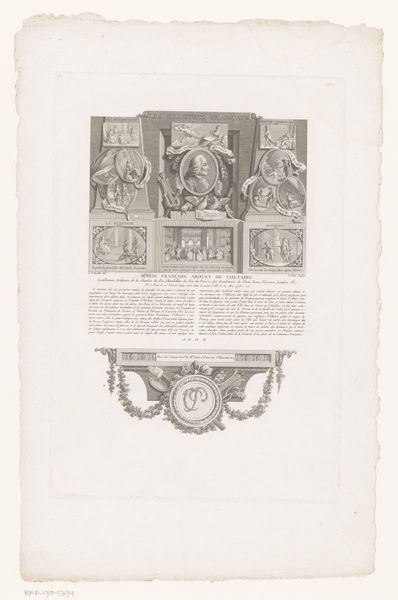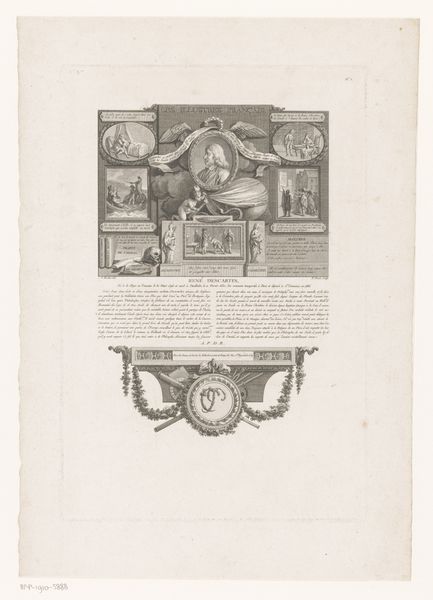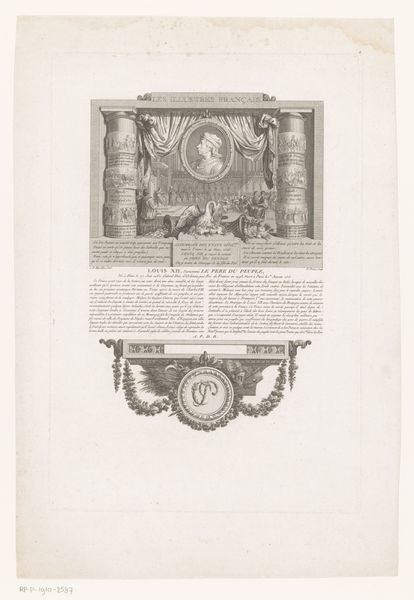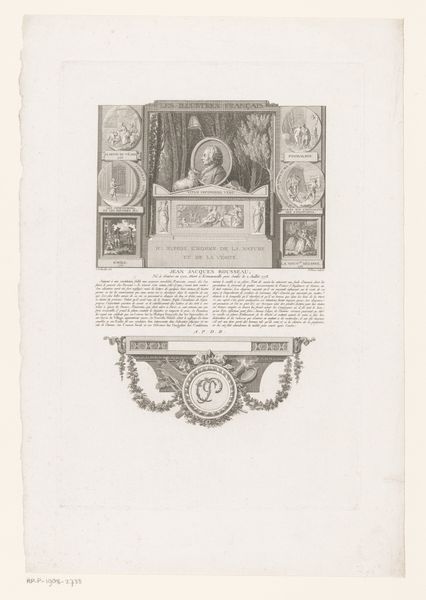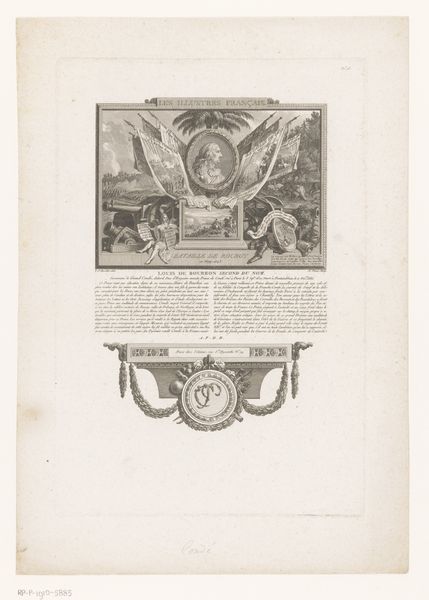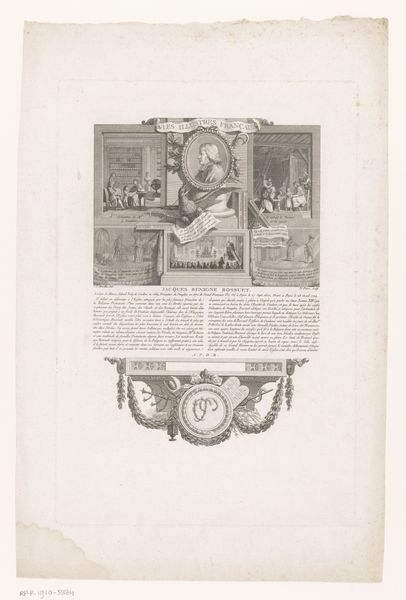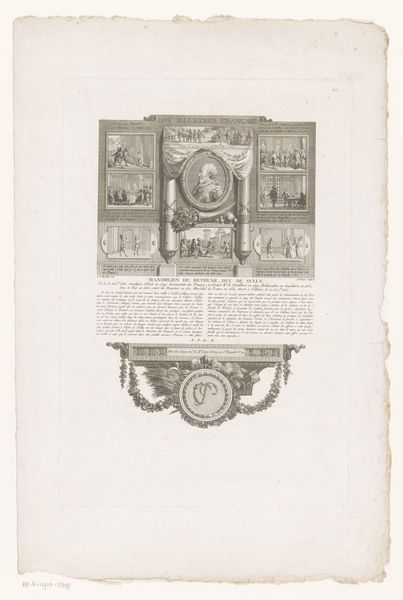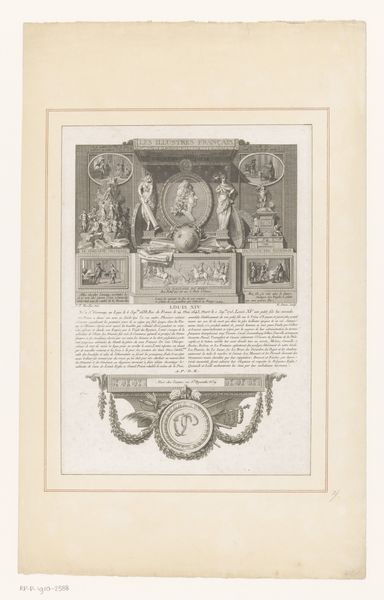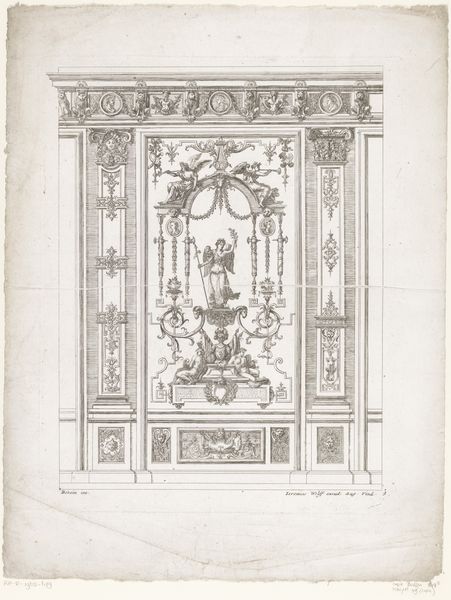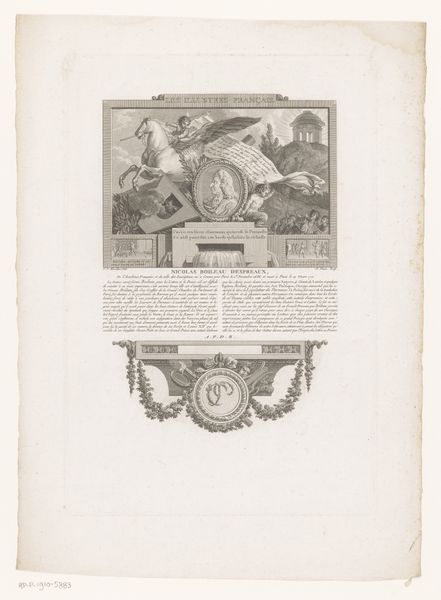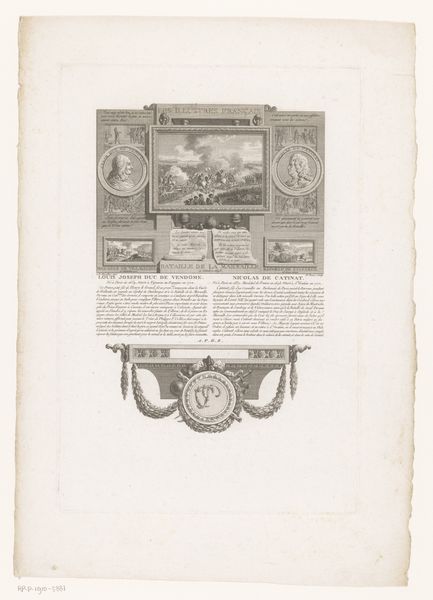
drawing, graphic-art, print, paper, engraving
#
portrait
#
drawing
#
graphic-art
#
neoclacissism
# print
#
old engraving style
#
figuration
#
paper
#
line
#
history-painting
#
engraving
Dimensions: height 333 mm, width 224 mm
Copyright: Rijks Museum: Open Domain
Editor: This is an allegorical portrait of Eustache Lesueur by Nicolas Ponce, created sometime between 1790 and 1816. It's a print, quite detailed, almost overwhelmingly so at first glance. I notice these smaller narrative scenes framing the central portrait. How do you interpret the context and significance of such portraits? Curator: Portraits like this, especially during the Neoclassical period, weren't just about individual likeness. They played a vital role in constructing historical narratives and national identities. Consider how Lesueur, a 17th-century painter, is being presented here in the late 18th and early 19th centuries. What message do you think the artist aimed to send through this representation of an artist from the past? Editor: It feels like Lesueur is being held up as a model of French artistic virtue. The style evokes the classical past and order and there’s a didactic element—almost as if to inspire contemporary artists. Curator: Exactly. Think about the social and political context. The French Revolution had recently occurred, followed by the Napoleonic era. Art was seen as a powerful tool for shaping public opinion and promoting certain values. By invoking a figure like Lesueur, who was known for his moralizing and history paintings, what values do you see promoted here? How does this artwork align with Neoclassical ideals? Editor: I guess the focus on clarity, order, and reason speaks to Neoclassicism's emphasis on civic virtue and its rejection of the perceived excesses of the Rococo. It's interesting to see how art becomes a tool for reinforcing societal values during such tumultuous times. Curator: Precisely. And the numerous scenes around Lesueur’s portrait are significant, almost as miniature highlights from his artistic career. So, in essence, it presents Lesueur's style as one that's beneficial and uplifting for the moral grounding of French society. Did you see anything interesting you didn’t notice at first glance? Editor: Now that you mention the smaller framed scenes, the composition suddenly strikes me as incredibly purposeful and even political. I never realized a portrait could carry so much historical and cultural weight. Curator: Understanding the artwork requires contextual understanding. Hopefully you will bring that knowledge to many future portraits and help our listeners!
Comments
No comments
Be the first to comment and join the conversation on the ultimate creative platform.
